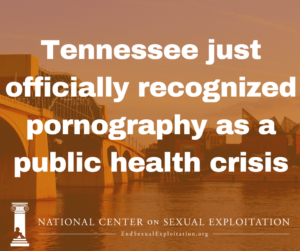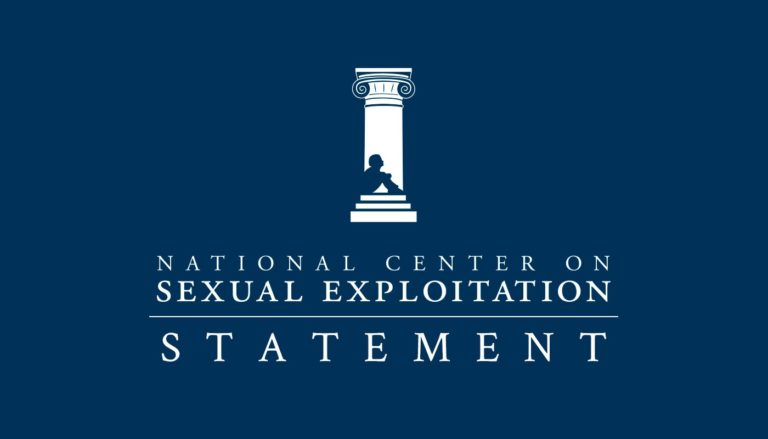Today, the governor of Tennessee, Bill Haslam, officially signed the joint resolution declaring pornography as a “public health crisis” in the state.
 The nonbinding resolution was sponsored by Sen. Mae Beavers, R-Mt. Juliet, and was passed with overwhelming support. It calls for education, prevention resources, and research on the negative effects of pornography.
The nonbinding resolution was sponsored by Sen. Mae Beavers, R-Mt. Juliet, and was passed with overwhelming support. It calls for education, prevention resources, and research on the negative effects of pornography.
Tennessee is the fourth state to officially recognize pornography as a public health crisis, following the examples of Utah, South Dakota, and Arkansas.
Like the Tobacco Industry, the Pornography Industry is Creating a Public Health Crisis. Despite tobacco’s former widespread use and acceptance in American culture, once its harms became apparent, society took action and adopted dramatic new policies to limit the harmful effects of smoking. Similarly, we believe that people need to be protected from pornography exposure, and be made aware of the risks associated with pornography use.

Pornography is linked to numerous public health harms, including:
- Pornography Is Linked to Increased Sexual Violence: A 2015 meta-analysis of 22 studies from seven countries found that internationally the consumption of pornography was significantly associated with increases in verbal and physical aggression, among males and females alike.(1)
- Pornography Use Shrinks Brain: A 2014 study found that increased pornography use is linked to decreased brain matter in the areas of motivation and decision-making, impaired impulse control, and desensitization to sexual reward.(2)
- Leads to Pornography-Induced Erectile Dysfunction (PIED): A 2015 study on pornography users found that 20.3% said “one motive for their porn use was to maintain arousal with their partner.” It also found that pornography use was linked to higher sexual desire, but lower overall sexual satisfaction, and lower erectile function.(3)
To learn more research, you can download the Pornography & Public Health: Research Summary here.
Watch the Live Signing Here:
Unfortunately, no formal statements were made during the actual signing ceremony. But the broad political support for this resolution, and the public signing ceremony, speak volumes.
(1) Paul J. Wright, Robert S. Tokunaga, and Ashley Kraus, “A Meta-Analysis of Pornography Consumption and Actual Acts of Sexual Aggression in General Population Studies,” Journal of Communication 66, no. 1 (February 2016): 183–205.
(2) Simone Kühn and Jürgen Gallinat, “Brain Structure and Functional Connectivity Associated with Pornography Consumption,” JAMA Psychiatry 71, no. 7 (2014): 827–834.
(3) Samuel L. Perry, “Does Viewing Pornography Reduce Marital Quality Over Time? Evidence from Longitudinal Data,” Archives of Sexual Behavior, (2016).
Alfredo Nicolosi, Edward O. Laumann, Dale B. Glasser, Edson D. Moreira, Jr., Anthony Paik, and Clive Gingell, “Sexual Behavior and Sexual Dysfunctions after Age 40: The Global Study of Sexual Attitudes and Behaviors,” Urology 64 (2004): 991–997.


